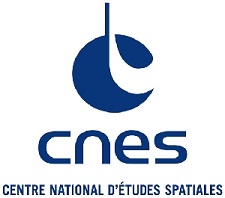
PARIS (CNES PR) — In partnership with CNES and Airbus Defense & Space and as part of the TELEO project, Safran Data Systems has successfully delivered the first in a series of digital modems dedicated to Earth-Space optical communications: the Cortex Lasercom.
Laser optical communications will make it possible to achieve speeds 10 to 100 times higher than the radio frequency communications currently used. Heir to the Cortex HDR, the world reference satellite imagery reception modem, Safran Data Systems has developed the Cortex Lasercom modem equipped with processing and decoding capabilities allowing to reach a record speed of 10 Gigabits per second of bit rate for Earth-Space optical communications, a level unequaled in the world.
The Cortex Lasercom will be used in several cooperation projects between Safran, Airbus and CNES, and will equip future optical ground stations (OGS) (Optical Ground Stations) marketed by Safran. These OGS will allow the link with all future satellites that will carry laser communication capabilities with the Earth. Two demonstrations on Airbus and CNES programs will take place in 2023, a world first: LASIN on the constellation of CO3D imaging satellites, and TELEO on the future BADR-8 telecommunications satellite. On this occasion, the Cortex Lasercom will be equipped with error-correcting codes developed by Airbus Defense & Space, which make it possible to deliver useful and error-free information to the user.
Jean-Marie Bétermier, Space Director for Safran Electronics & Defense and President of Safran Data Systems was pleased with the performance of this new digital modem: “By producing the Cortex Lasercom modem, Safran Data Systems confirms its ambition to push back the limits of on-board links floor very high speed. »
François Gaullier, Director of Telecommunications Systems at Airbus Defense and Space said: “Airbus is delighted with the excellent cooperation with Safran Data Systems on the ground modems of its future 10Gbit onboard optical ground communication systems which will be demonstrated during the TELEO in-flight experiment in 2023.”
Finally, Caroline Laurent, Director of Orbital Systems and Applications at CNES, underlined that “CNES is committed to the development of a mainly French industrial base dedicated to future space telecommunications systems by optical links offering speeds of a few tens to a few hundred gigabits per second. In this context, the Cortex Lasercom is the culmination of several years of R&T, then development and technical cooperation between Airbus Defense and Space, Safran Data Systems and CNES. »
Safran is an international high-tech group operating in the fields of aeronautics (propulsion, equipment and interiors), space and defence. Its mission: to contribute sustainably to a safer world, where air transport is becoming ever more environmentally friendly, more comfortable and more accessible. Established on all continents, the Group employs 76,000 people for a turnover of 16.5 billion euros in 2020, and occupies, alone or in partnership, leading global or European positions in its markets. Safran engages in research and development programs that maintain the environmental priorities of its technological innovation roadmap.
Safran is listed on Euronext Paris and is part of the CAC 40 and Euro Stoxx 50 indices.
Safran Data Systems, a subsidiary of Safran Electronics & Defense, is a world leader in test instrumentation, telemetry, space communications, and a French equipment supplier that offers a full range of equipment and satellite tracking ground stations for satellite manufacturers, integrators, space agencies and commercial operators (communication satellites, Earth observation).
Airbus Defense and Space, one of the two Divisions of Airbus, is the European leader in the space and defense industry. It is one of the world leaders in the space industry and one of the world’s top ten defense companies. It achieves a turnover of more than 10 billion euros with a workforce of some 33,000 employees. Its Executive Director is Michael Schöllhorn.
CNES (National Center for Space Studies) is the public institution responsible for proposing French space policy to the Government and implementing it within Europe. It designs and puts satellites into orbit and invents the space systems of tomorrow; it encourages the emergence of new services that are useful on a daily basis. CNES, created in 1961, is at the origin of major space projects, launchers and satellites and is the natural interlocutor of industry to push innovation. CNES has nearly 2,400 employees, women and men passionate about this space which opens up infinite, innovative fields of application and operates in five areas of intervention: Ariane, science, observation, telecommunications, defence. CNES is a major player in technological innovation, economic development and industrial policy in France. It also establishes scientific partnerships and is involved in numerous international cooperations. France, represented by CNES, is one of the main contributors to the European Space Agency (ESA).

